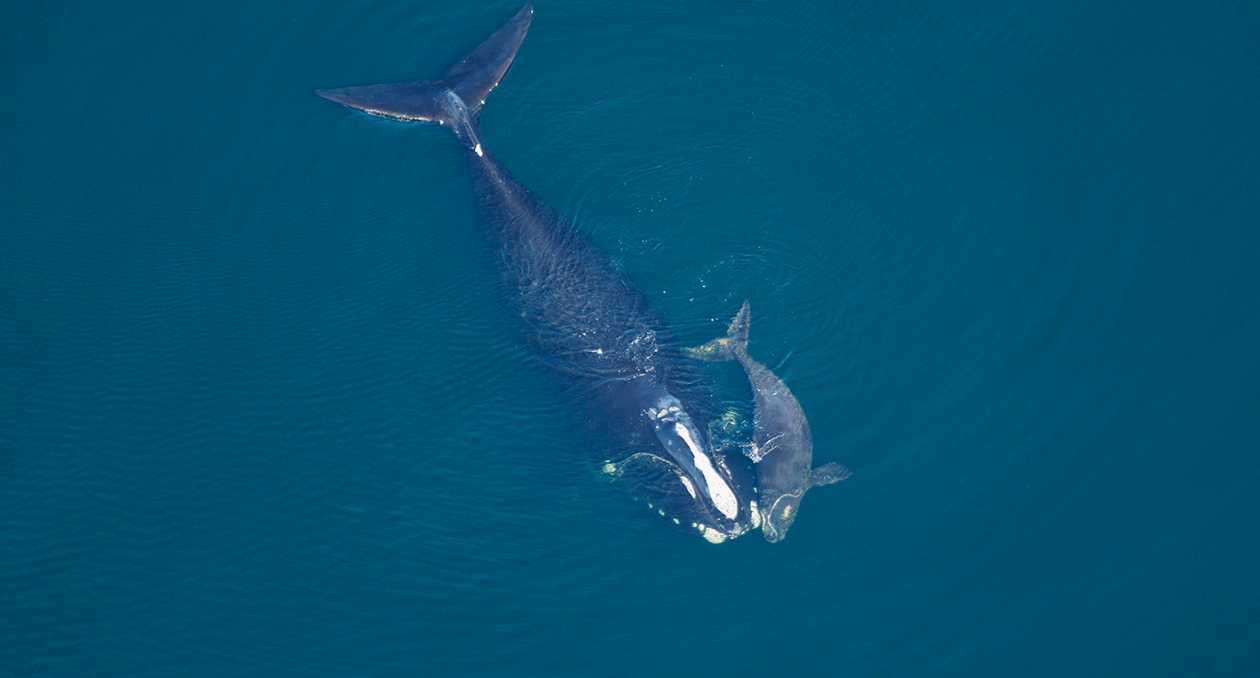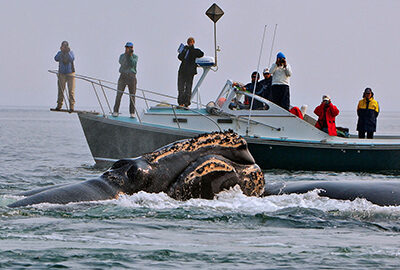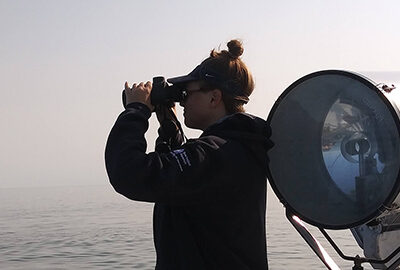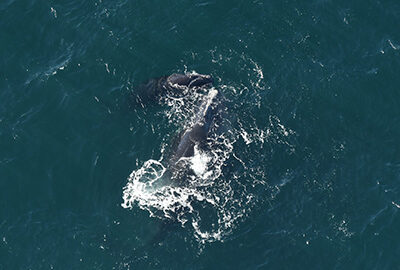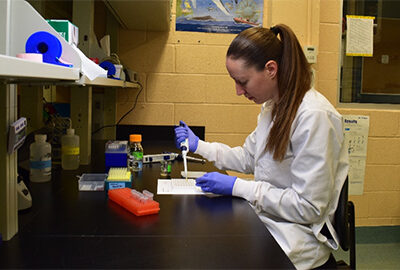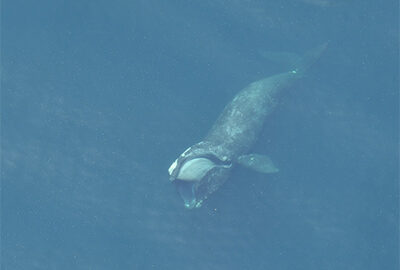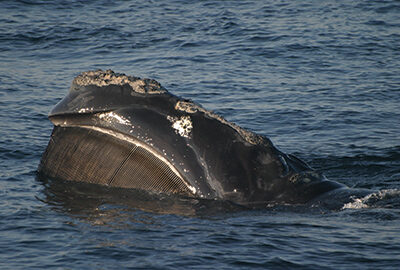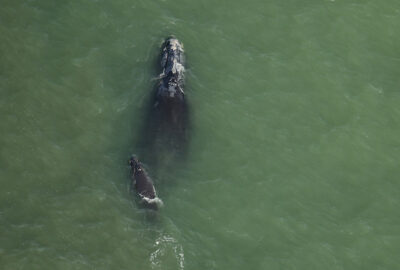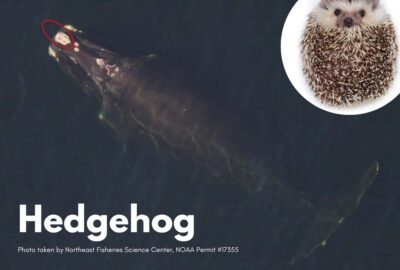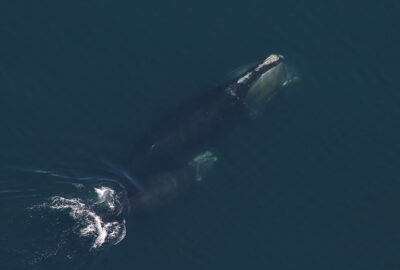The North Atlantic right whale is one of the rarest whale species in the world but can often be seen right in our backyard. With about 384 whales remaining, New England Aquarium researchers are working tirelessly to study and protect this critically endangered species from threats like vessel strikes and entanglement in fishing gear.
Right Whale Facts
Size
45-52 feet in length; up to 70 tons
Diet
Copepods, a type of zooplankton the size of a grain of rice. It’s estimated that a right whale can eat one to two tons of copepods daily!
Lifespan
60 years or more
Range
Primarily East Coasts of the United States and Canada, from Florida to Canada’s Gulf of St. Lawrence
Conservation Status
Critically Endangered
Threats to Survival
- Vessel strikes
- Entanglement in fishing gear
- Climate change
Our Work to Protect Right Whales
The Aquarium works with government, industry, and environmental stakeholders to find solutions to human impacts. Here are a few ways we are working to protect this critically endangered species.
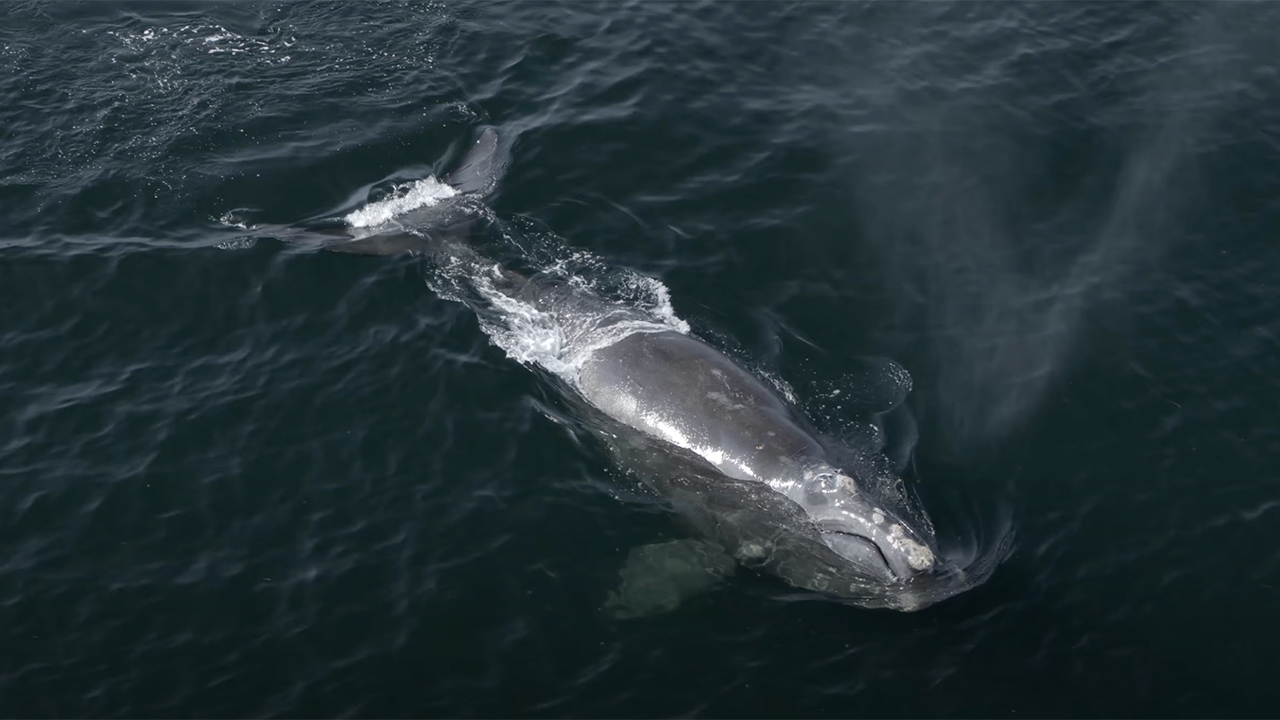
North Atlantic Right Whales
With fewer than 380 individuals remaining, New England Aquarium researchers are working tirelessly to study and protect this critically endangered species.
New Calves Provide Hope
Each year from December through March, pregnant North Atlantic right whales head to warmer Southeastern waters to give birth. This time of year is known as calving season. Whales and their young can be seen gliding through the water, spurring optimism for this critically endangered marine mammal.
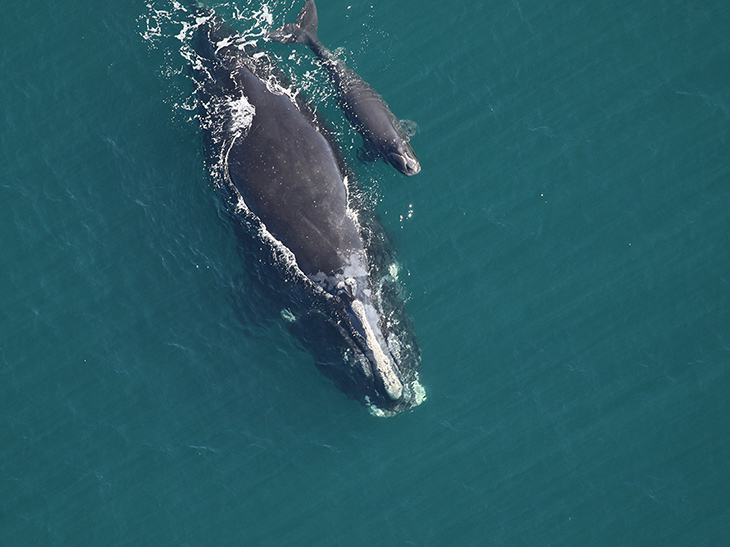
Tracking Right Whale Sightings Since 1935
Curated by the Aquarium, the North Atlantic Right Whale Catalog is a directory of more than a million photographs of right whales dating back to 1935. The catalog is considered an invaluable data source and relies on contributions of photographs from as many people and groups as possible. If you think you saw a right whale, submit your photo to the catalog. Every photo counts!
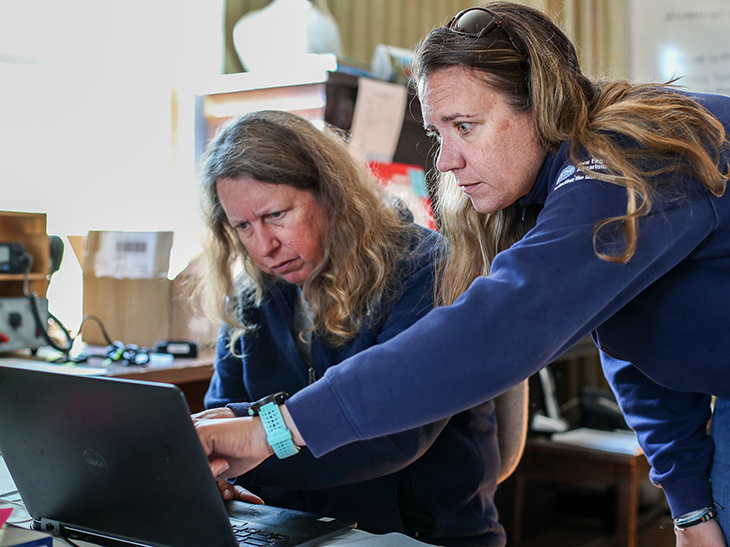
Ask the Expert
Learn more about North Atlantic right whales with research scientist Heather.
What are North Atlantic right whales?
1:12Where can North Atlantic right whales be found?
00:51What challenges do North Atlantic right whales face?
1:13What can we do to help right whales?
1:11




North Atlantic Right Whale Consortium
The North Atlantic Right Whale Consortium was co-founded in 1986 by the New England Aquarium. It is an internationally recognized single-species consortia model comprising more than 100 government and nongovernmental organizations, institutions, and individuals.
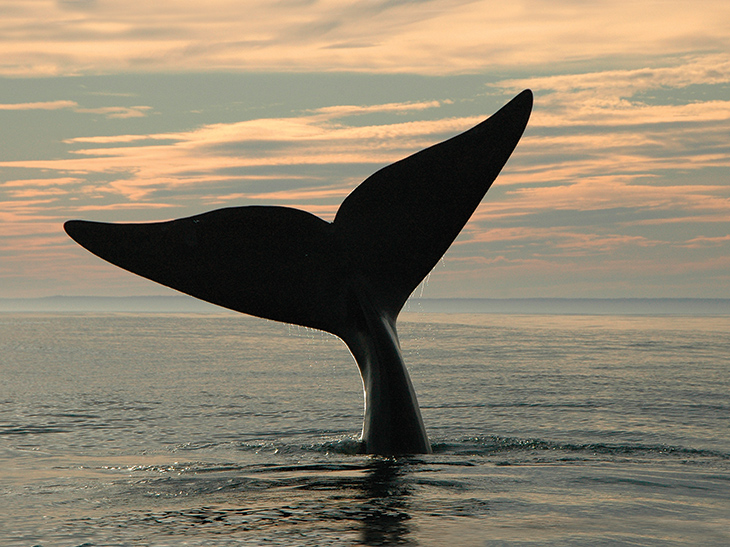
Researching the Ocean’s Biggest Residents
In addition to our right whale research, the Aquarium's dedicated research arm, the Anderson Cabot Center for Ocean Life studies a variety of other whale species to determine how humans and climate change are impacting their populations and habitats.
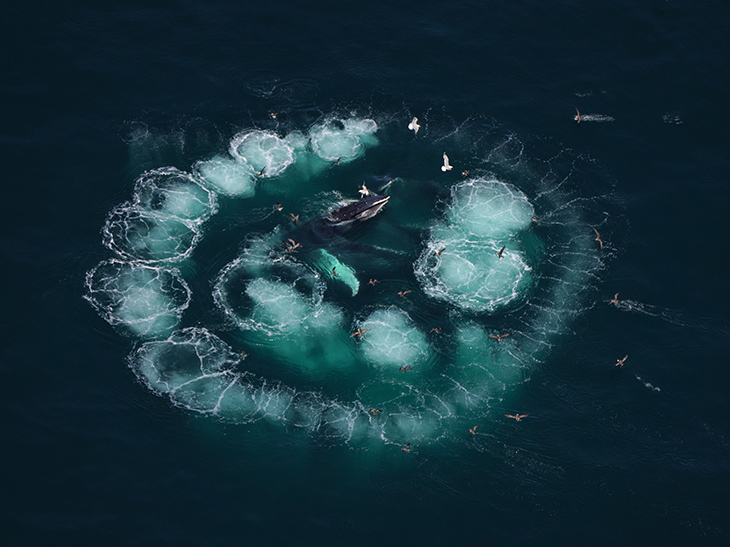
Conservation Stories
Learn more about our work to protect whales.

